A nation’s well being system faces stress when hit by an surprising shock, comparable to what we observe in the midst of the coronavirus illness 2019 (COVID-19) pandemic. The idea of resilience is very related in this context and is a prerequisite for a well being system succesful of withstanding future shocks. By exploring how the key dimensions of the resilient well being system framework are utilized, the current systematic evaluate synthesizes the important options of resilient well being methods in low- and middle-income international locations. The goal of this evaluate is to establish the relevance of well being system resilience in the context of a significant shock, via higher understanding its dimensions, makes use of and implications.
The evaluate makes use of the best-fit framework synthesis method. An a priori conceptual framework was chosen and a coding framework created. A systematic search recognized 4284 distinctive citations from digital databases and stories by non-governmental organisations, 12 of which met the inclusion standards. Data had been extracted and coded in opposition to the pre-existing themes. Themes outdoors of the a priori framework had been collated to type a refined listing of themes. Then, all twelve research had been revisited utilizing the new listing of themes in the context of every research.
Ten themes had been generated from the evaluation. Five confirmed the a priori conceptual framework that seize the dynamic attributes of a resilient system. Five new themes had been recognized as foundational for attaining resilience: realigned relationships, foresight and motivation as drivers, and emergency preparedness and change administration as organisational mechanisms. The refined conceptual mannequin exhibits how the themes inter-connect. The foundations of resilience seem like crucial particularly in resource-constrained settings to unlock the dynamic attributes of resilience. This evaluate prompts international locations to think about constructing the foundations of resilience described right here as a precedence to raised put together for future shocks.
Development of a xylosyltransferase-I-selective UPLC MS/MS exercise assay utilizing a selected acceptor peptide
Xylosyltransferases-I and -II (XT-I and -II) play an essential position concerning the homeostasis of the extracellular matrix. Both enzymes catalyze the preliminary step of the proteoglycan (PG) biosynthesis by the switch of xylose from their pure substrate uridine diphosphate (UDP) -xylose to a PG-core protein. The subsequent addition of additional sugars, catalyzed by totally different glycosyltransferases, results in the formation of a tetrasaccharide linker, which connects the PG-core protein and glycosaminoglycans. The purpose for the look of two XT isoforms in all greater organisms is just not identified and outstanding, as each enzymes are capable of provoke PG biosynthesis.
The dedication of the XT-I exercise is of medical significance as a result of it may be used as a biomarker of a number of PG-associated fibrotic illnesses. Since earlier assays didn’t adequately differentiate between each XT-isoforms, the goal of this research was to develop an XT-I selective mass spectrometric (MS) assay. For this goal, we initially used isoform-specific supernatants to efficiently determine an artificial acceptor peptide which was xylosylated way more selectively by the XT-I when in comparison with the XT-II isoform.
The assay was additional optimized regarding methodical parameters comparable to the injection quantity and the incubation time of the reaction-mixture. By utilizing samples overlaying a broad XT-activity spectrum, we efficiently validated the assay for use not just for the quantification of cell tradition samples but additionally human serum specimens. Compared to beforehand used XT-activity assays, our newly developed check is extra selective and delicate, inexpensive and simpler to carry out in excessive throughput. Alterations in expression of particular translation components, and disruption of canonical mRNA translational regulation, each contribute to the pathology of many NCDs.
Telehealth Solutions for In-hospital Communication with Patients Under Isolation During COVID-19
The coronavirus illness 2019 (COVID-19) pandemic is a public well being disaster that has rapidly overwhelmed our healthcare system. It has led to important shortages in private protecting gear (PPE), ventilators, and intensive care unit beds throughout the nation. As the preliminary entry level for sufferers with suspected COVID sickness, emergency departments (ED) have needed to adapt rapidly to prioritize the security of sufferers and suppliers whereas nonetheless delivering optimum, well timed affected person care. COVID-19 has introduced many challenges for the ED that additionally lengthen to all inpatient companies.
Some of these key challenges are the basic duties of speaking with sufferers in respiratory isolation whereas minimizing PPE utilization and enabling all sufferers who’ve been affected by hospitals’ customer restrictions to join with their households. We talk about the design rules behind implementing a strong in-hospital telehealth system for patient-provider and patient-family communication, present a evaluate of the strengths and weaknesses of potential videoconferencing choices, and ship concise, step-by-step guides for organising a safe, low-cost, user-friendly resolution that may be quickly deployed.
 cDNA - Alzheimer's Disease: Brain |
|
C1236035Alz |
Biochain |
40 reactions |
EUR 802 |
 cDNA - Alzheimer's Disease: Brain: Pons |
|
C1236071Alz |
Biochain |
40 reactions |
EUR 802 |
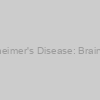 cDNA - Alzheimer's Disease: Brain: Amygdala |
|
C1236036Alz |
Biochain |
40 reactions |
EUR 802 |
 cDNA - Alzheimer's Disease: Brain: Cerebellum |
|
C1236039Alz |
Biochain |
40 reactions |
EUR 802 |
 cDNA - Alzheimer's Disease: Brain: Hippocampus |
|
C1236052Alz |
Biochain |
40 reactions |
EUR 975 |
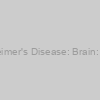 cDNA - Alzheimer's Disease: Brain: Frontal Lobe |
|
C1236051Alz |
Biochain |
40 reactions |
EUR 802 |
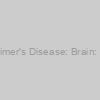 cDNA - Alzheimer's Disease: Brain: Parietal Lobe |
|
C1236066Alz |
Biochain |
40 reactions |
EUR 802 |
 cDNA - Alzheimer's Disease: Brain: Temporal Lobe |
|
C1236078Alz |
Biochain |
40 reactions |
EUR 802 |
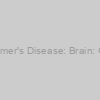 cDNA - Alzheimer's Disease: Brain: Occipital Lobe |
|
C1236062Alz |
Biochain |
40 reactions |
EUR 802 |
 cDNA - Alzheimer's Disease: Brain: Precentral Gyrus |
|
C1236073Alz |
Biochain |
40 reactions |
EUR 802 |
 cDNA - Alzheimer's Disease: Brain: Postcentral Gyrus |
|
C1236072Alz |
Biochain |
40 reactions |
EUR 802 |
 Total RNA - Alzheimer's Disease: Brain |
|
R1236035Alz-50 |
Biochain |
50 ug |
EUR 460 |
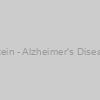 Total Protein - Alzheimer's Disease: Brain |
|
P1236035Alz |
Biochain |
1 mg |
EUR 542 |
 Total Protein - Alzheimer's Disease: Brain: Pons |
|
P1236071Alz |
Biochain |
1 mg |
EUR 542 |
 Frozen Tissue Section - Alzheimer's Disease: Brain |
|
T1236035Alz |
Biochain |
5 slides |
EUR 523 |
 Total Protein - Alzheimer's Disease: Brain: Amygdala |
|
P1236036Alz |
Biochain |
1 mg |
EUR 542 |
 Total Protein - Alzheimer's Disease: Brain: Cerebellum |
|
P1236039Alz |
Biochain |
1 mg |
EUR 542 |
 Total Protein - Alzheimer's Disease: Brain: Hippocampus |
|
P1236052Alz |
Biochain |
1 mg |
EUR 667 |
 Total Protein - Alzheimer's Disease: Brain: Frontal Lobe |
|
P1236051Alz |
Biochain |
1 mg |
EUR 542 |
 Frozen Tissue Section - Alzheimer's Disease: Brain: Pons |
|
T1236071Alz |
Biochain |
5 slides |
EUR 523 |
 Total Protein - Alzheimer's Disease: Brain: Parietal Lobe |
|
P1236066Alz |
Biochain |
1 mg |
EUR 542 |
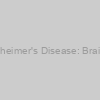 Total Protein - Alzheimer's Disease: Brain: Temporal Lobe |
|
P1236078Alz |
Biochain |
1 mg |
EUR 542 |
 Total Protein - Alzheimer's Disease: Brain: Occipital Lobe |
|
P1236062Alz |
Biochain |
1 mg |
EUR 542 |
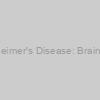 Total Protein - Alzheimer's Disease: Brain: Corpus Callosum |
|
P1236045Alz |
Biochain |
1 mg |
EUR 542 |
 Total Protein - Alzheimer's Disease: Brain: Precentral Gyrus |
|
P1236073Alz |
Biochain |
1 mg |
EUR 542 |
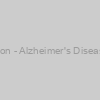 Frozen Tissue Section - Alzheimer's Disease: Brain: Amygdala |
|
T1236036Alz |
Biochain |
5 slides |
EUR 523 |
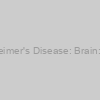 Total Protein - Alzheimer's Disease: Brain: Medulla oblongata |
|
P1236057Alz |
Biochain |
1 mg |
EUR 542 |
 Total Protein - Alzheimer's Disease: Brain: Postcentral Gyrus |
|
P1236072Alz |
Biochain |
1 mg |
EUR 542 |
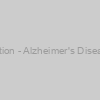 Frozen Tissue Section - Alzheimer's Disease: Brain: Pituitary |
|
T1236068Alz |
Biochain |
5 slides |
EUR 971 |
 Frozen Tissue Section - Alzheimer's Disease: Brain: Cerebellum |
|
T1236039Alz |
Biochain |
5 slides |
EUR 523 |
 Frozen Tissue Section - Alzheimer's Disease: Brain: Hippocampus |
|
T1236052Alz |
Biochain |
5 slides |
EUR 971 |
 Paraffin Tissue Section - Alzheimer's Disease: Brain: Cerebellum |
|
T2236039Alz |
Biochain |
5 slides |
EUR 262 |
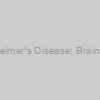 Genomic DNA - Alzheimer's Disease: Brain, from a single donor |
|
D1236035Alz |
Biochain |
50 ug |
EUR 562 |
 Frozen Tissue Section - Alzheimer's Disease: Brain: Frontal Lobe |
|
T1236051Alz |
Biochain |
5 slides |
EUR 523 |
 Frozen Tissue Section - Alzheimer's Disease: Brain: Parietal Lobe |
|
T1236066Alz |
Biochain |
5 slides |
EUR 523 |
 Frozen Tissue Section - Alzheimer's Disease: Brain: Temporal Lobe |
|
T1236078Alz |
Biochain |
5 slides |
EUR 523 |
 Frozen Tissue Section - Alzheimer's Disease: Brain: Occipital Lobe |
|
T1236062Alz |
Biochain |
5 slides |
EUR 523 |
 Frozen Tissue Section - Alzheimer's Disease: Brain: Corpus Callosum |
|
T1236045Alz |
Biochain |
5 slides |
EUR 523 |
 Frozen Tissue Section - Alzheimer's Disease: Brain: Precentral Gyrus |
|
T1236073Alz |
Biochain |
5 slides |
EUR 523 |
 Frozen Tissue Section - Alzheimer's Disease: Brain: Medulla oblongata |
|
T1236057Alz |
Biochain |
5 slides |
EUR 523 |
 Frozen Tissue Section - Alzheimer's Disease: Brain: Postcentral Gyrus |
|
T1236072Alz |
Biochain |
5 slides |
EUR 523 |
 Genomic DNA - Alzheimer's Disease: Brain: Pons, from a single donor |
|
D1236071Alz |
Biochain |
50 ug |
EUR 562 |
 Paraffin Tissue Section - Alzheimer's Disease: Brain: Medulla oblongata |
|
T2236057Alz |
Biochain |
5 slides |
EUR 523 |
 Genomic DNA - Alzheimer's Disease: Brain: Cerebellum, from a single donor |
|
D1236039Alz |
Biochain |
50 ug |
EUR 562 |
 Total Protein - Parkinson's Disease: Brain: Thalamus |
|
P1236079Par |
Biochain |
1 mg |
EUR 542 |
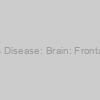 Genomic DNA - Alzheimer's Disease: Brain: Frontal Lobe, from a single donor |
|
D1236051Alz |
Biochain |
50 ug |
EUR 562 |
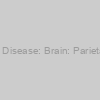 Genomic DNA - Alzheimer's Disease: Brain: Parietal Lobe, from a single donor |
|
D1236066Alz |
Biochain |
50 ug |
EUR 562 |
 Genomic DNA - Alzheimer's Disease: Brain: Temporal Lobe, from a single donor |
|
D1236078Alz |
Biochain |
50 ug |
EUR 562 |
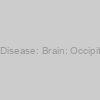 Genomic DNA - Alzheimer's Disease: Brain: Occipital Lobe, from a single donor |
|
D1236062Alz |
Biochain |
50 ug |
EUR 562 |
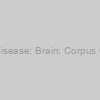 Genomic DNA - Alzheimer's Disease: Brain: Corpus Callosum, from a single donor |
|
D1236045Alz |
Biochain |
50 ug |
EUR 562 |
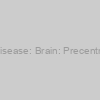 Genomic DNA - Alzheimer's Disease: Brain: Precentral Gyrus , from a single donor |
|
D1236073Alz |
Biochain |
50 ug |
EUR 562 |
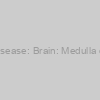 Genomic DNA - Alzheimer's Disease: Brain: Medulla oblongata, from a single donor |
|
D1236057Alz |
Biochain |
50 ug |
EUR 562 |
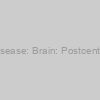 Genomic DNA - Alzheimer's Disease: Brain: Postcentral Gyrus , from a single donor |
|
D1236072Alz |
Biochain |
50 ug |
EUR 562 |
 Frozen Tissue Section - Parkinson's Disease: Brain: Thalamus |
|
T1236079Par |
Biochain |
5 slides |
EUR 523 |
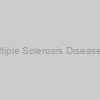 Total Protein - Multiple Sclerosis Disease: Brain: Thalamus |
|
P1236079Msc |
Biochain |
1 mg |
EUR 542 |
 Paraffin Tissue Section - Parkinson's Disease: Brain: Thalamus |
|
T2236079Par |
Biochain |
5 slides |
EUR 262 |
 Lysate) Pons (Alzheimer's Disease) Lysate |
|
XBL-10298 |
ProSci |
0.1 mg |
EUR 796.2 |
|
Description: Human pons tissue lysate was prepared by homogenization using a proprietary technique. The tissue was frozen in liquid nitrogen immediately after excision and then stored at -70°C. The human pons tissue total protein is provided in a buffer including HEPES (pH7.9), MgCl2, KCl, EDTA, Sucrose, Glycerol, Sodium deoxycholate, NP-40, and a cocktail of protease inhibitors. For quality control purposes, the pons tissue pattern on SDS-PAGE gel is shown to be consistent for each lot by visualization with coomassie blue staining. The pons tissue is then Western analyzed by either GAPDH or β-actin antibody, and the expression level is consistent with each lot. |
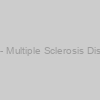 Frozen Tissue Section - Multiple Sclerosis Disease: Brain: Thalamus |
|
T1236079Msc |
Biochain |
5 slides |
EUR 523 |
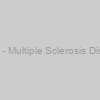 Paraffin Tissue Section - Multiple Sclerosis Disease: Brain: Thalamus |
|
T2236079Msc |
Biochain |
5 slides |
EUR 262 |
 Lysate) Amygdala (Alzheimer's Disease) Lysate |
|
XBL-10274 |
ProSci |
0.1 mg |
EUR 796.2 |
|
Description: Human amygdala tissue lysate was prepared by homogenization using a proprietary technique. The tissue was frozen in liquid nitrogen immediately after excision and then stored at -70°C. The human amygdala tissue total protein is provided in a buffer including HEPES (pH7.9), MgCl2, KCl, EDTA, Sucrose, Glycerol, Sodium deoxycholate, NP-40, and a cocktail of protease inhibitors. For quality control purposes, the amygdala tissue pattern on SDS-PAGE gel is shown to be consistent for each lot by visualization with coomassie blue staining. The amygdala tissue is then Western analyzed by either GAPDH or β-actin antibody, and the expression level is consistent with each lot. |
 Paraffin Tissue Section - Alzheimers Disease: Brain |
|
T2236035Alz |
Biochain |
5 slides |
EUR 262 |
 Total RNA - Alzheimer's Disease: Pons |
|
R1236071Alz-10 |
Biochain |
10 ug |
EUR 460 |
 Lysate) Hippocampus (Alzheimer's Disease) Lysate |
|
XBL-10286 |
ProSci |
0.1 mg |
EUR 922.2 |
|
Description: Human hippocamps tissue lysate was prepared by homogenization using a proprietary technique. The tissue was frozen in liquid nitrogen immediately after excision and then stored at -70°C. The human hippocamps tissue total protein is provided in a buffer including HEPES (pH7.9), MgCl2, KCl, EDTA, Sucrose, Glycerol, Sodium deoxycholate, NP-40, and a cocktail of protease inhibitors. For quality control purposes, the hippocamps tissue pattern on SDS-PAGE gel is shown to be consistent for each lot by visualization with coomassie blue staining. The hippocamps tissue is then Western analyzed by either GAPDH or β-actin antibody, and the expression level is consistent with each lot. |
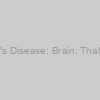 Genomic DNA - Parkinson's Disease: Brain: Thalamus, from a single donor |
|
D1236079Par |
Biochain |
50 ug |
EUR 562 |
 Membrane Protein - Alzheimer's Disease:Brain: Amygdala |
|
P3236036Alz |
Biochain |
0.1 mg |
EUR 472 |
 Lysate) Frontal Lobe (Alzheimer's Disease) Lysate |
|
XBL-10282 |
ProSci |
0.1 mg |
EUR 796.2 |
|
Description: Human frontal lobe tissue lysate was prepared by homogenization using a proprietary technique. The tissue was frozen in liquid nitrogen immediately after excision and then stored at -70°C. The human frontal lobe tissue total protein is provided in a buffer including HEPES (pH7.9), MgCl2, KCl, EDTA, Sucrose, Glycerol, Sodium deoxycholate, NP-40, and a cocktail of protease inhibitors. For quality control purposes, the frontal lobe tissue pattern on SDS-PAGE gel is shown to be consistent for each lot by visualization with coomassie blue staining. The frontal lobe tissue is then Western analyzed by either GAPDH or β-actin antibody, and the expression level is consistent with each lot. |
 Paraffin Tissue Section - Alzheimers Disease: Brain: Pons |
|
T2236071Alz |
Biochain |
5 slides |
EUR 262 |
 Membrane Protein - Alzheimer's Disease:Brain: Hippocampus |
|
P3236052Alz |
Biochain |
0.1 mg |
EUR 584 |
 Lysate) Parietal Lobe (Alzheimer's Disease) Lysate |
|
XBL-10294 |
ProSci |
0.1 mg |
EUR 796.2 |
|
Description: Human parietal lobe tissue lysate was prepared by homogenization using a proprietary technique. The tissue was frozen in liquid nitrogen immediately after excision and then stored at -70°C. The human parietal lobe tissue total protein is provided in a buffer including HEPES (pH7.9), MgCl2, KCl, EDTA, Sucrose, Glycerol, Sodium deoxycholate, NP-40, and a cocktail of protease inhibitors. For quality control purposes, the parietal lobe tissue pattern on SDS-PAGE gel is shown to be consistent for each lot by visualization with coomassie blue staining. The parietal lobe tissue is then Western analyzed by either GAPDH or β-actin antibody, and the expression level is consistent with each lot. |
 Lysate) Temporal Lobe (Alzheimer's Disease) Lysate |
|
XBL-10314 |
ProSci |
0.1 mg |
EUR 796.2 |
|
Description: Human temporal lobe tissue lysate was prepared by homogenization using a proprietary technique. The tissue was frozen in liquid nitrogen immediately after excision and then stored at -70°C. The human temporal lobe tissue total protein is provided in a buffer including HEPES (pH7.9), MgCl2, KCl, EDTA, Sucrose, Glycerol, Sodium deoxycholate, NP-40, and a cocktail of protease inhibitors. For quality control purposes, the temporal lobe tissue pattern on SDS-PAGE gel is shown to be consistent for each lot by visualization with coomassie blue staining. The temporal lobe tissue is then Western analyzed by either GAPDH or β-actin antibody, and the expression level is consistent with each lot. |
 Lysate) Occipital lobe (Alzheimer's Disease) Lysate |
|
XBL-10290 |
ProSci |
0.1 mg |
EUR 796.2 |
|
Description: Human occipital lobe tissue lysate was prepared by homogenization using a proprietary technique. The tissue was frozen in liquid nitrogen immediately after excision and then stored at -70°C. The human occipital lobe tissue total protein is provided in a buffer including HEPES (pH7.9), MgCl2, KCl, EDTA, Sucrose, Glycerol, Sodium deoxycholate, NP-40, and a cocktail of protease inhibitors. For quality control purposes, the occipital lobe tissue pattern on SDS-PAGE gel is shown to be consistent for each lot by visualization with coomassie blue staining. The occipital lobe tissue is then Western analyzed by either GAPDH or β-actin antibody, and the expression level is consistent with each lot. |
) Human iPS Cell Line (Alzheimer's Disease) |
|
CSC-00850L |
Creative Bioarray |
One Frozen vial |
Ask for price |
|
|
 Lysate) Corpus Callosum (Alzheimer's Disease) Lysate |
|
XBL-10278 |
ProSci |
0.1 mg |
EUR 796.2 |
|
Description: Human corpus Callosum tissue lysate was prepared by homogenization using a proprietary technique. The tissue was frozen in liquid nitrogen immediately after excision and then stored at -70°C. The human corpus Callosum tissue total protein is provided in a buffer including HEPES (pH7.9), MgCl2, KCl, EDTA, Sucrose, Glycerol, Sodium deoxycholate, NP-40, and a cocktail of protease inhibitors. For quality control purposes, the corpus Callosum tissue pattern on SDS-PAGE gel is shown to be consistent for each lot by visualization with coomassie blue staining. The corpus Callosum tissue is then Western analyzed by either GAPDH or β-actin antibody, and the expression level is consistent with each lot. |
 Membrane Protein - Alzheimer's Disease:Brain: Temporal Lobe |
|
P3236078Alz |
Biochain |
0.1 mg |
EUR 472 |
 Lysate) Precentral Gyrus (Alzheimer's Disease) Lysate |
|
XBL-10306 |
ProSci |
0.1 mg |
EUR 796.2 |
|
Description: Human precentral gyrus tissue lysate was prepared by homogenization using a proprietary technique. The tissue was frozen in liquid nitrogen immediately after excision and then stored at -70°C. The human precentral gyrus tissue total protein is provided in a buffer including HEPES (pH7.9), MgCl2, KCl, EDTA, Sucrose, Glycerol, Sodium deoxycholate, NP-40, and a cocktail of protease inhibitors. For quality control purposes, the precentral gyrus tissue pattern on SDS-PAGE gel is shown to be consistent for each lot by visualization with coomassie blue staining. The precentral gyrus tissue is then Western analyzed by either GAPDH or β-actin antibody, and the expression level is consistent with each lot. |
 Paraffin Tissue Section - Alzheimers Disease: Brain: Amygdala |
|
T2236036Alz |
Biochain |
5 slides |
EUR 262 |
 Membrane Lysate) Amygdala (Alzheimer's Disease) Membrane Lysate |
|
XBL-10272 |
ProSci |
0.1 mg |
EUR 752.1 |
|
Description: Human brain amygdala tissue membrane protein lysate was prepared by isolating the membrane protein from whole tissue homogenates using a proprietary technique. The human amygdala tissue was frozen in liquid nitrogen immediately after excision and then stored at -70°C. The membrane protein is provided in a buffer including HEPES (pH 7.9), MgCl2, KCl, EDTA, Sucrose, Glycerol, sodium deoxycholate, NP-40, and a cocktail of protease inhibitors. For quality control purposes, the isolated brain amygdala tissue membrane protein pattern on SDS-PAGE gel is shown to be consistent for each lot by visualization with coomassie blue staining. The isolated brain amygdala tissue membrane protein is then Western analyzed by either GAPDH or β-actin antibody to confirm there is no signal or very weak signal. |
 Lysate) Postcentral Gyrus (Alzheimer's Disease) Lysate |
|
XBL-10302 |
ProSci |
0.1 mg |
EUR 796.2 |
|
Description: Human postcentral gyrus tissue lysate was prepared by homogenization using a proprietary technique. The tissue was frozen in liquid nitrogen immediately after excision and then stored at -70°C. The human postcentral gyrus tissue total protein is provided in a buffer including HEPES (pH7.9), MgCl2, KCl, EDTA, Sucrose, Glycerol, Sodium deoxycholate, NP-40, and a cocktail of protease inhibitors. For quality control purposes, the postcentral gyrus tissue pattern on SDS-PAGE gel is shown to be consistent for each lot by visualization with coomassie blue staining. The postcentral gyrus tissue is then Western analyzed by either GAPDH or β-actin antibody, and the expression level is consistent with each lot. |
 Total RNA - Alzheimer's Disease: Frontal Lobe |
|
R1236051Alz-10 |
Biochain |
10 ug |
EUR 460 |
 Genomic DNA - Multiple Sclerosis Disease: Brain: Thalamus, from a single donor |
|
D1236079Msc |
Biochain |
50 ug |
EUR 562 |
 Total RNA - Alzheimer's Disease: Parietal Lobe |
|
R1236066Alz-10 |
Biochain |
10 ug |
EUR 460 |
 Total RNA - Alzheimer's Disease: Temporal Lobe |
|
R1236078Alz-10 |
Biochain |
10 ug |
EUR 460 |
 Total RNA - Alzheimer's Disease: Occipital Lobe |
|
R1236062Alz-10 |
Biochain |
10 ug |
EUR 460 |
 Membrane Lysate) Hippocampus (Alzheimer's Disease) Membrane Lysate |
|
XBL-10284 |
ProSci |
0.1 mg |
EUR 852.9 |
|
Description: Human brain hippocamps tissue membrane protein lysate was prepared by isolating the membrane protein from whole tissue homogenates using a proprietary technique. The human hippocamps tissue was frozen in liquid nitrogen immediately after excision and then stored at -70°C. The membrane protein is provided in a buffer including HEPES (pH 7.9), MgCl2, KCl, EDTA, Sucrose, Glycerol, sodium deoxycholate, NP-40, and a cocktail of protease inhibitors. For quality control purposes, the isolated brain hippocamps tissue membrane protein pattern on SDS-PAGE gel is shown to be consistent for each lot by visualization with coomassie blue staining. The isolated brain hippocamps tissue membrane protein is then Western analyzed by either GAPDH or β-actin antibody to confirm there is no signal or very weak signal. |
 Paraffin Tissue Section - Alzheimers Disease: Brain: Hippocampus |
|
T2236052Alz |
Biochain |
5 slides |
EUR 834 |
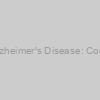 Total RNA - Alzheimer's Disease: Corpus Callosum |
|
R1236045Alz-10 |
Biochain |
10 ug |
EUR 460 |
 Paraffin Tissue Section - Alzheimers Disease: Brain: Frontal Lobe |
|
T2236051Alz |
Biochain |
5 slides |
EUR 262 |
 Total RNA - Alzheimer's Disease: Precentral Gyrus |
|
R1236073Alz-10 |
Biochain |
10 ug |
EUR 460 |
 Paraffin Tissue Section - Alzheimers Disease: Brain: Parietal Lobe |
|
T2236066Alz |
Biochain |
5 slides |
EUR 262 |
 Paraffin Tissue Section - Alzheimers Disease: Brain: Temporal Lobe |
|
T2236078Alz |
Biochain |
5 slides |
EUR 262 |
 Total RNA - Alzheimer's Disease: Postcentral Gyrus |
|
R1236072Alz-10 |
Biochain |
10 ug |
EUR 460 |
 Cytoplasmic Lysate) Hippocampus (Alzheimer's Disease) Cytoplasmic Lysate |
|
XBL-10283 |
ProSci |
0.1 mg |
EUR 273.3 |
|
Description: Human brain hippocamps tissue cytoplasmic protein lysate was prepared by isolating the cytoplasmic protein from whole tissue homogenates using a proprietary technique. The human hippocamps tissue was frozen in liquid nitrogen immediately after excision and then stored at -70°C. The cytoplasmic protein is provided in a buffer including HEPES (pH 7.9), MgCl2, KCl, EDTA, Sucrose, glycerol, and a cocktail of protease inhibitors. For quality control purposes, the isolated brain hippocamps tissue cytoplasmic protein pattern on SDS-PAGE gel is shown to be consistent for each lot by visualization with coomassie blue staining. The isolated brain hippocamps tissue cytoplasmic protein is then Western analyzed by GAPDH antibody, and the expression level is consistent with each lot. |
 Paraffin Tissue Section - Alzheimers Disease: Brain: Corpus Callosum |
|
T2236045Alz |
Biochain |
5 slides |
EUR 262 |
 Paraffin Tissue Section - Alzheimers Disease: Brain: Occipital Lobe |
|
T2236062Alz |
Biochain |
5 slides |
EUR 262 |
 Membrane Lysate) Temporal Lobe (Alzheimer's Disease) Membrane Lysate |
|
XBL-10312 |
ProSci |
0.1 mg |
EUR 752.1 |
|
Description: Human brain temporal lobe tissue membrane protein lysate was prepared by isolating the membrane protein from whole tissue homogenates using a proprietary technique. The human temporal lobe tissue was frozen in liquid nitrogen immediately after excision and then stored at -70°C. The membrane protein is provided in a buffer including HEPES (pH 7.9), MgCl2, KCl, EDTA, Sucrose, Glycerol, sodium deoxycholate, NP-40, and a cocktail of protease inhibitors. For quality control purposes, the isolated brain temporal lobe tissue membrane protein pattern on SDS-PAGE gel is shown to be consistent for each lot by visualization with coomassie blue staining. The isolated brain temporal lobe tissue membrane protein is then Western analyzed by either GAPDH or β-actin antibody to confirm there is no signal or very weak signal. |
 Non-Ab Component of Alzheimer's Disease Amyloid |
|
5-01639 |
CHI Scientific |
4 x 1mg |
Ask for price |
 Non-Ab Component of Alzheimer's Disease Amyloid |
|
SP-89317-1 |
Alpha Diagnostics |
1 mg |
EUR 343.2 |
) Paraffin Tissue Section - Alzheimers Disease: Brain: Precentral Gyrus (Movement) |
|
T2236073Alz |
Biochain |
5 slides |
EUR 262 |
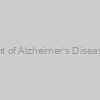 Non-Ab Component of Alzheimer's Disease Amyloid Peptide |
|
abx266991-1ml |
Abbexa |
1 ml |
EUR 925 |
 Non-Ab Component of Alzheimer's Disease Amyloid Peptide |
|
abx266991-200l |
Abbexa |
200 µl |
EUR 375 |
) Paraffin Tissue Section - Alzheimers Disease: Brain: Postcentral Gyrus (Sensation) |
|
T2236072Alz |
Biochain |
5 slides |
EUR 262 |
 HighQC™ Human IPSC From Fibroblast-Familial Alzheimer's Disease |
|
ABC-SC2075 |
AcceGen |
1 vial |
Ask for price |
|
Description: Cell Type: iPSC; Primary Tissue: Fibroblast; Reprogramming Method: Episomal Plasmid; Disease: Familial Alzheimer's Disease; Cells are only guaranteed with purchase of Gentaur Media and Gentaur Extra Cellular Matrix for appropriate cell culture, for 30 days from the date of shipment. |
 / Alzheimer's Disease beta-Protein / SP-17 (Human)) Amyloid-beta Protein (12-28) / Alzheimer's Disease beta-Protein / SP-17 (Human) |
|
018-04 |
PHOENIX PEPTIDE |
200 μg |
EUR 50.76 |
 / Alzheimer's Disease beta-Protein / SP-28 (Human)) Amyloid-beta Protein (1-28) / Alzheimer's Disease beta-Protein / SP-28 (Human) |
|
018-02 |
PHOENIX PEPTIDE |
200 μg |
EUR 108 |
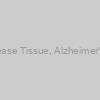 Frozen Tissue Section Panel - Human Disease Tissue, Alzheimer's Disease, Multi-tissue I, 7 different tissues |
|
T6236444Alz |
Biochain |
5 slides |
EUR 1249 |
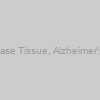 Frozen Tissue Section Panel - Human Disease Tissue, Alzheimer's Disease, Multi-tissue II, 7 different tissues |
|
T6236445Alz |
Biochain |
5 slides |
EUR 1249 |
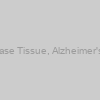 Frozen Tissue Section Panel - Human Disease Tissue, Alzheimer's Disease, Multi-tissue III, 8 different tissues |
|
T6236446Alz |
Biochain |
5 slides |
EUR 1249 |
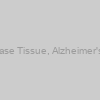 Frozen Tissue Section Panel - Human Disease Tissue, Alzheimer's Disease, Multi-tissue IV, 7 different tissues |
|
T6236564Alz |
Biochain |
5 slides |
EUR 1249 |
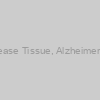 Paraffin Tissue Section Panel - Human Disease Tissue, Alzheimer's Disease, Multi-tissue I, 8 different tissues |
|
T8236444Alz |
Biochain |
5 slides |
EUR 713 |
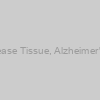 Paraffin Tissue Section Panel - Human Disease Tissue, Alzheimer's Disease, Multi-tissue II, 7 different tissues |
|
T8236445Alz |
Biochain |
5 slides |
EUR 713 |
 Paraffin Tissue Section Panel - Human Disease Tissue, Alzheimer's Disease, Multi-tissue IV, 7 different tissues |
|
T8236564Alz |
Biochain |
5 slides |
EUR 713 |
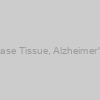 Paraffin Tissue Section Panel - Human Disease Tissue, Alzheimer's Disease, Multi-tissue III, 8 different tissues |
|
T8236446Alz |
Biochain |
5 slides |
EUR 713 |
 Alzheimers Disease gamma-Secretase Detection Set |
|
PSI-1820 |
ProSci |
1 Set |
EUR 752.1 |
|
|
|
Description: Accumulation of the amyloid-β peptide (Aβ) in the cerebral cortex is a critical event in the pathogenesis of Alzheimer’s disease. The β-amyloid protein precursor (APP) is cleaved by three enzymes (TACE, BACE/BACE2 and γ-secretase) at three distinct sites (α, β and γ respectively). The γ-secretase complex is a membrane-bound aspartyl protease that can cleave certain proteins at peptide bonds buried within the hydrophobic environment of the lipid bilayer and is composed of the proteins APH1, nicastrin, PEN2 and presenilin1. Its cleavage of APP results in either the non-toxic p3 (from the α and γ cleavage site) or the toxic Aβ (from the β and γ cleavage site). APH1 was initially identified as a component of the Notch pathway and exists in at least three distinct isoforms with APH1a as the principal isoform present in the γ-secretase complex. Mice deficient in this isoform, but not the other two, were lethal at E10.5, with impaired vascular and neural development observed. Besides acting as a critical component of the γ-secretase complex, nicastrin is also thought to be involved in cell proliferation and signaling, especially in regards to activation of Notch receptors as loss of nicastrin expression results in mouse embryonic lethality. Presenilin1 was initially identified a marker of susceptibility to early-onset Alzheimer’s disease.;;For images please see PDF data sheet |
 Alzheimers Disease B-Amyloid Protein Detection Set |
|
PSI-1812 |
ProSci |
1 Set |
EUR 752.1 |
|
|
|
Description: Accumulation of the amyloid-β peptide (Aβ) in the cerebral cortex is a critical event in the pathogenesis of Alzheimer’s disease. The βamyloid protein precursor (APP) is cleaved by one of two βsecretases (BACE and BACE2), producing a soluble derivative of the protein and a membrane anchored 99-amino acid carboxy-terminal fragment (C99). The C99 fragment serves as substrate for βsecretase to generate the 4 kDa amyloid-β peptide (Aβ), which is deposited in the Alzheimer’s disease patients’ brains. BACE was identified by several groups independently and designated β-site APP cleaving enzyme (BACE) . BACE is a transmembrane aspartic protease and co-localizes with APP. BACE2 also cleaves APP at β-site and at a different site within Aβ. BACE2 locates on chromosome 21q22.3, the so-called ‘Down critical region’, suggesting that BACE2 and Aβ may also contribute to the pathogenesis of Down syndrome.;;For images please see PDF data sheet |
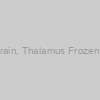 Bovine Brain, Thalamus Frozen Sections |
|
BF-205 |
Zyagen |
10 slides |
EUR 261 |
 Total Protein - Dementia: Brain: Thalamus |
|
P1236079Dem |
Biochain |
1 mg |
EUR 542 |
 Bovine Brain, Thalamus Paraffin Sections |
|
BP-205 |
Zyagen |
10 slides |
EUR 240 |
 Total Protein - Depression: Brain: Thalamus |
|
P1236079Dep |
Biochain |
1 mg |
EUR 542 |
-Human presenilin 2 (Alzheimer disease 4) (PSEN2), transcript variant 1) PSEN2 (untagged)-Human presenilin 2 (Alzheimer disease 4) (PSEN2), transcript variant 1 |
|
SC119867 |
Origene Technologies GmbH |
10 µg |
Ask for price |
-Human presenilin 2 (Alzheimer disease 4) (PSEN2), transcript variant 2) PSEN2 (untagged)-Human presenilin 2 (Alzheimer disease 4) (PSEN2), transcript variant 2 |
|
SC324404 |
Origene Technologies GmbH |
10 µg |
Ask for price |
-Human presenilin 2 (Alzheimer disease 4) (PSEN2), transcript variant 2) PSEN2 (untagged)-Human presenilin 2 (Alzheimer disease 4) (PSEN2), transcript variant 2 |
|
SC109639 |
Origene Technologies GmbH |
10 µg |
Ask for price |
 - Human presenilin 2 (Alzheimer disease 4) (PSEN2), transcript variant 2) PSEN2 (GFP-tagged) - Human presenilin 2 (Alzheimer disease 4) (PSEN2), transcript variant 2 |
|
RG202921 |
Origene Technologies GmbH |
10 µg |
Ask for price |
 - Human presenilin 2 (Alzheimer disease 4) (PSEN2), transcript variant 1) PSEN2 (GFP-tagged) - Human presenilin 2 (Alzheimer disease 4) (PSEN2), transcript variant 1 |
|
RG223613 |
Origene Technologies GmbH |
10 µg |
Ask for price |
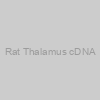 Rat Thalamus cDNA |
|
RD-205 |
Zyagen |
30 reactions |
EUR 243 |
-Human presenilin 2 (Alzheimer disease 4) (PSEN2), transcript variant 1) PSEN2 (Myc-DDK-tagged)-Human presenilin 2 (Alzheimer disease 4) (PSEN2), transcript variant 1 |
|
RC223613 |
Origene Technologies GmbH |
10 µg |
Ask for price |
-Human presenilin 2 (Alzheimer disease 4) (PSEN2), transcript variant 2) PSEN2 (Myc-DDK-tagged)-Human presenilin 2 (Alzheimer disease 4) (PSEN2), transcript variant 2 |
|
RC202921 |
Origene Technologies GmbH |
10 µg |
Ask for price |
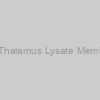 Human Brain Thalamus Lysate Membrane Fraction |
|
IHUBRTHLTLM100UG |
Innovative research |
each |
EUR 870 |
|
|
|
Description: Human Brain Thalamus Lysate Membrane Fraction |
 Frozen Tissue Section - Dementia: Brain: Thalamus |
|
T1236079Dem |
Biochain |
5 slides |
EUR 523 |
 (PSEN2), transcript variant 2, mGFP tagged) Lenti ORF clone of Human presenilin 2 (Alzheimer disease 4) (PSEN2), transcript variant 2, mGFP tagged |
|
RC202921L2 |
Origene Technologies GmbH |
10 µg |
Ask for price |
 (PSEN2), transcript variant 2, mGFP tagged) Lenti ORF clone of Human presenilin 2 (Alzheimer disease 4) (PSEN2), transcript variant 2, mGFP tagged |
|
RC202921L4 |
Origene Technologies GmbH |
10 µg |
Ask for price |
 Paraffin Tissue Section - Dementia: Brain: Thalamus |
|
T2236079Dem |
Biochain |
5 slides |
EUR 262 |
Non-communicable illnesses (NCDs) are medical circumstances that, by definition, are non-infectious and non-transmissible amongst folks. Much of present NCDs are typically attributable to genetic, behavioral, and metabolic danger components that usually embrace extreme alcohol consumption, smoking, weight problems, and untreated elevated blood stress, and share many frequent sign transduction pathways. Alterations in cell and physiological signaling and transcriptional management pathways have been properly studied in a number of human NCDs, however these identical pathways additionally regulate expression and perform of the protein artificial equipment and mRNA translation which have been much less properly investigated.
